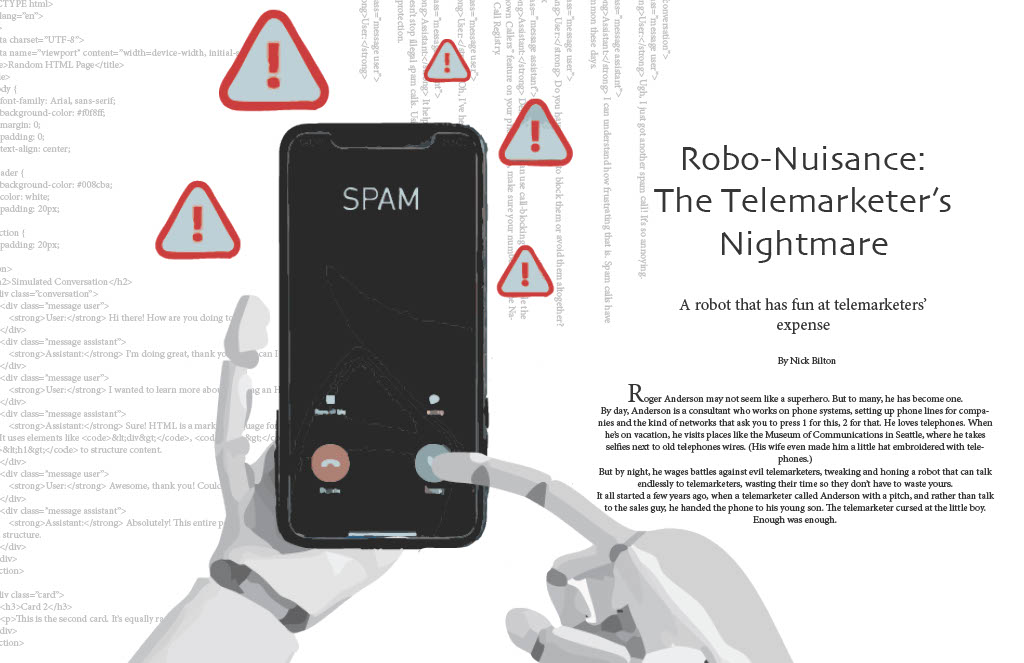For this conceptual Illustration Project, we were tasked with designing a magazine layout inspired by one of three article options. These projects allowed us to flex our creative muscles, blending design, typography, and illustration to tell compelling visual stories. From the nostalgic charm of “Old Tech” to the innovative tale of an AI robot wasting telemarketers’ time, these projects pushed our conceptual thinking and illustrative abilities.
AI’s Tangle with Telemarketers: A Futuristic Metaphor
When reading through the different stories, I found the 3rd one the most interesting. It is based on a story about a robot that is designed to waste telemarketers’ time. My challenge was to visually balance some of the humor, but still have it be more serious looking. The design steered clear of overly cartoon depictions, opting instead for sleek, modern aesthetics. Staying strong with the concept, I decided to add a phone that appears with the caller ID being “Spam” and being answered by what looks like a robotic hand. I decided to add a little bit of a texture and more of the context of coding as the background, to simulate the idea of being programmed.


A robot hand, crafted with smooth, lifelike machinery, became the focal point, holding a blocky, easy to distinguish, modern day iphone. The telemarketer, not shown, but mainly due to the simple idea of us not ever seeing them either.
The layout incorporated a basic and simple typography, but mainly due to the detail of the illustrations being more important. I added the background code to add texture so it would not stand as a straight white page, but also to add some depth. On the second page, quotes from the article were magnified to draw readers’ attention, complemented by a big hand reaching for a robot hand, similar to the ‘Creation of Adam’ art piece by Michelangelo. Overall, based on my want to keep it simple and detailed, I think that it turned out great.




